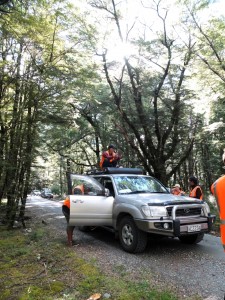Iteration is the creative process of improving the work in incremental steps. I don’t know if it’s truly a buzzword, but from where I’m standing, it’s always buzzing around. But I think that iteration means something different depending on where you’re standing.
In an advertising agency, for example, the creative team goes through their own rounds of iteration, brainstorming ideas, solidifying them visually through thumbs for internal meetings, then a concept board (if it’s a TVC) to be cleared with client, then upon feedback, work the process up to a storyboard. The creative process is completely internal in that they have full control over their workflow with the client giving feedback. Ask the creative director what iteration means for her workflow, and she’ll tell you “it’s working up the Idea in small steps, making sure, all the while, the client is kept in the loop and making appropriate feedback, which we then apply, and advance the Idea into a final storyboard to be produced.” So far, so good.
In the post-production shop, the process is pretty much the same, only a bit more complex, naturally; we deal with lots of technical elements. So while an agency might have a single pipeline we have at last four going almost concurrently, and those pipelines intermingle with each other. We have models to be made, rigging to be applied to models, animation to be applied to the rig, models to be shaded, shaded models to be lit, whole scenes to render, renders to be comped, effects to be designed and comped, etc. And that’s a standard bread-and-butter job. Let’s not get into things like simulations, matchmoving, rotoscoping, and the like.
Now imagine the same creative director is working with a post-production shop to produce the TVC. Ask the same question, “What is iteration?” She’ll answer, non-verbatim, with this expectation: “I want to see the final product very soon, and iterate that until it becomes better.”
Because the post-production process is unknown to her, she doesn’t realise that we have many final ‘products’ to iterate over: models have their own iteration-cycle, distinct from the animation iteration-cycle; so is look development, so is effects development; and these come together as a ‘master’ development pipeline with a separate iteration-cycle as well. She doesn’t automatically think to apply her own iterative workflow principle to the post-production side because they are uninformed. But because they prefer not to know, they remain at arm’s length from the post-production group, as distanced as they themselves, as creative teams, are to their clients, who are equally indifferent of their process. The indifference is passed down from client to agency, from agency to post-production, generally speaking.
Now, all this time, I’ve been using the agency’s creative director as my example. This is not a fair emphasis, by the way, though it surely makes the point clear, and many agencies relate this way to post-production houses. But you will also find directors, be it art directors, TVC directors, or anyone calling the ‘creative shots’ are just as guilty of this indifference. But the worse of all, it should be noted, is that the indifference occurs within a post-production group, as some of the upper crust only pay lip-service to the very technical nature of their own operation. Though I began with the ignorance of an agency creative director, she is the least guilty of them all.
The post-production upper crust might have done well to learn the internal creative process of the agency. But I think they condescended to think they could be anything but the client, and thus distancing themselves from their own post-production group. Perhaps by assuming the superior client role, they thought can eke something creative out of the ‘headphone-hooded geeks’.
The agency enjoys a creative process that they themselves have built and enforce in order to serve their own purposes because doing so will yield a better product for the client and for themselves. Yet, the post-production group gets served up onto a plate of uninformed demands by uninformed folks, left undefended by the upper crust who are just as uninformed; and it would have yielded poor results if not for talent and lots unnecessary personal sacrifices. But even sacrifices have their limits.
Anyone who demands, “I want you to go hard out so you can get me the final product tomorrow, so I can iterate/nitpick/pixel-fuck that until it becomes better” does not know what iteration means and lacks the discipline of imagination necessary to mix the creative aesthetic with the highly technical processes, which is what this industry is about.
